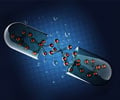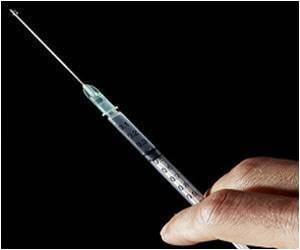An intelligent injector has been developed for safe and effective delivery of drugs to target tissues. The injector has sensors that allow precise targeting of the needle to the specified site of injection.
- An intelligent-injector for tissue-targeting (i2T2) has been developed for safe and effective drug delivery to target tissues
- The i2T2 injector can deliver drugs to tiny, compact, and hard-to-reach spaces
- The injector is easy to operate and does not require any special training
- It could replace conventional needle injections in the future
The study, published in Nature Biomedical Engineering, was led by Dr. Jeffrey M. Karp, PhD, who is a Professor of Medicine at Brigham and Women’s Hospital and Harvard Medical School. He is also a Principal Faculty at the Harvard Stem Cell Institute and an Affiliate Faculty at the Massachusetts Institute of Technology (MIT), Boston, Massachusetts, USA.
The first author of the paper was Dr. Girish Chitnis, PhD, a former postdoctoral fellow in Karp’s laboratory and currently a Senior Mechanical Engineer at Micro-Leads, Cambridge, Massachusetts, USA.
Read More..
Intelligent-Injector for Tissue-Targeting (i2T2): Fabrication & Testing
A standard hypodermic needle and components of commercially available syringes were used to fabricate the i2T2 injector. The injection device was tested in a universal testing machine that measures various types of forces such as frictional force, driving force, and maximal force.Since different tissues have different densities, this intelligent injector senses differences in pressure that the needle encounters while passing through different tissue layers. The injector provides feedback instantaneously, which ensures smooth passage of the needle so that it targets the correct tissue layer, without overshooting the target area.
Animal Model Studies
Studies were carried out in three animal models. This was aimed at determining the accuracy of delivery of the injections in three very difficult sites, such as the suprachoroidal, peritoneal and epidural spaces, as well as subcutaneous delivery.Using these animal models, it was established that the i2T2 injector could accurately deliver drugs to the exact target tissue without overshooting.
The researchers used contrast dyes to visualize the accuracy of delivery by the i2T2 injector. For example, when the dye was injected into the suprachoroidal space of the eye, it accumulated in the desired tissue site.
Interestingly, the researchers also found that stem cells could be delivered to the same target tissue by injecting into the suprachoroidal space. Importantly, the injected stem cells survived the injection process, indicating that it is a relatively gentle process and does not reduce cell viability.
This approach could be utilized for delivering stem cells to hard-to-reach areas of the body, which would help in developing therapies in the area of Regenerative Medicine.
Advantages of i2T2
A major advantage of this i2T2 injector is that it can deliver drugs to very small areas, such as the suprachoroidal space, which is located between the sclera and choroid layers at the back of the eye. This space is so narrow that it is hardly one millimeter in thickness. There is no scope for error while injecting into this tiny space, as even minute overshooting could damage the adjacent retina – the light-sensitive layer of the eye.Other difficult areas where the new injector can be judiciously used include the epidural space surrounding the spinal cord, the peritoneal space in the abdomen, and the subcutaneous layer between the skin and muscles.
An additional advantage is that the i2T2 injector is very easy to use and does not require any special training to operate.
“Targeting specific tissues using a conventional needle can be difficult and often requires a highly trained individual,” says Karp. “In the past century there has been minimal innovation to the needle itself, and we saw this as an opportunity to develop better, more accurate devices. We sought to achieve improved tissue targeting while keeping the design as simple as possible for ease of use.”
Concluding Remarks
The researchers are confident that the i2T2 injector will be instrumental for delivering injections in difficult-to-target locations in the body. They indicate that the next logical step would be to test the effectiveness of the i2T2 injector in relevant pre-clinical animal disease models, prior to carrying out human studies to demonstrate the utility and safety of the technology.“This intelligent injector is a simple solution that could be rapidly advanced to patients to help increase target tissue precision and decrease overshoot injuries. We have completely transformed needles with a small modification that achieves better tissue targeting,” says Chitnis. “This is a platform technology, so the uses could be very widespread.”
Funding Source
The study was funded by the National Institutes of Health (NIH) and Boston Keratoprosthesis (KPro).Reference:
- A resistance-sensing mechanical injector for the precise delivery of liquids to target tissue - (http://dx.doi.org/10.1038/s41551-019-0350-2)
Source-Medindia











